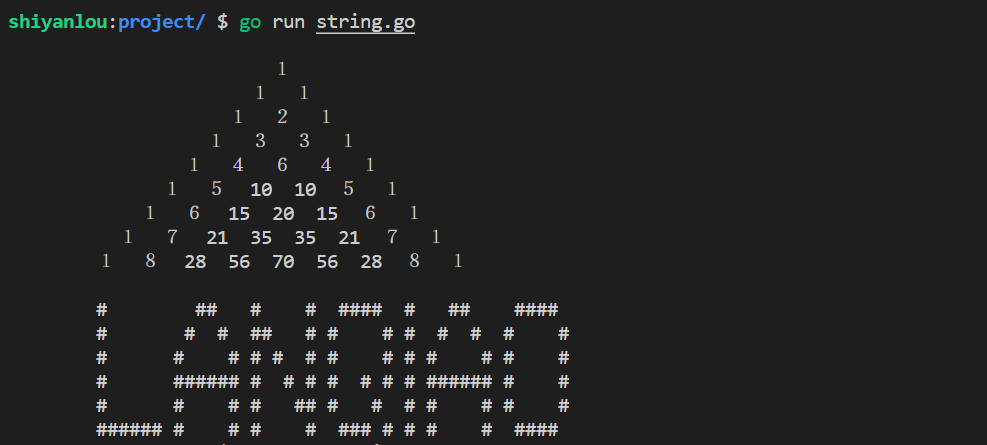Converting Strings and Integers
We can use functions from the strconv package to convert between strings and integers:
package main
import (
"fmt"
"strconv"
)
func main() {
// Declare a string a and an integer b
a, b := "233", 223
// Use Atoi to convert an integer to a string
c, _ := strconv.Atoi(a)
// Use Sprintf and Itoa functions respectively
// to convert a string to an integer
d1 := fmt.Sprintf("%d", b)
d2 := strconv.Itoa(b)
fmt.Printf("The type of a: %T\n", a) // string
fmt.Printf("The type of b: %T\n", b) // int
fmt.Printf("The type of c: %T\n", c) // int
fmt.Printf("The type of d1: %T\n", d1) // string
fmt.Printf("The type of d2: %T\n", d2) // string
}
The expected output is as follows:
The type of a: string
The type of b: int
The type of c: int
The type of d1: string
The type of d2: string
In the program, we use the Sprintf() function from the fmt package, which has the following format:
func Sprintf(format string, a ...interface{}) string
format is a string with escape sequences, a is a constant or variable that provides values for the escape sequences, and ... means that there can be multiple variables of the same type as a. The string after the function represents that Sprintf returns a string. Here's an example of using this function:
a = Sprintf("%d+%d=%d", 1, 2, 3)
fmt.Println(a) // 1+2=3
In this code snippet, the format is passed with three integer variables 1, 2, and 3. The %d integer escape character in format is replaced by the integer values, and the Sprintf function returns the result after replacement, 1+2=3.
Also, note that when using strconv.Atoi() to convert an integer to a string, the function returns two values, the converted integer val and the error code err. Because in Go, if you declare a variable, you must use it, we can use an underscore _ to comment out the err variable.
When strconv.Atoi() converts correctly, err returns nil. When an error occurs during conversion, err returns the error message, and the value of val will be 0. You can change the value of string a and replace the underscore with a normal variable to try it yourself.




